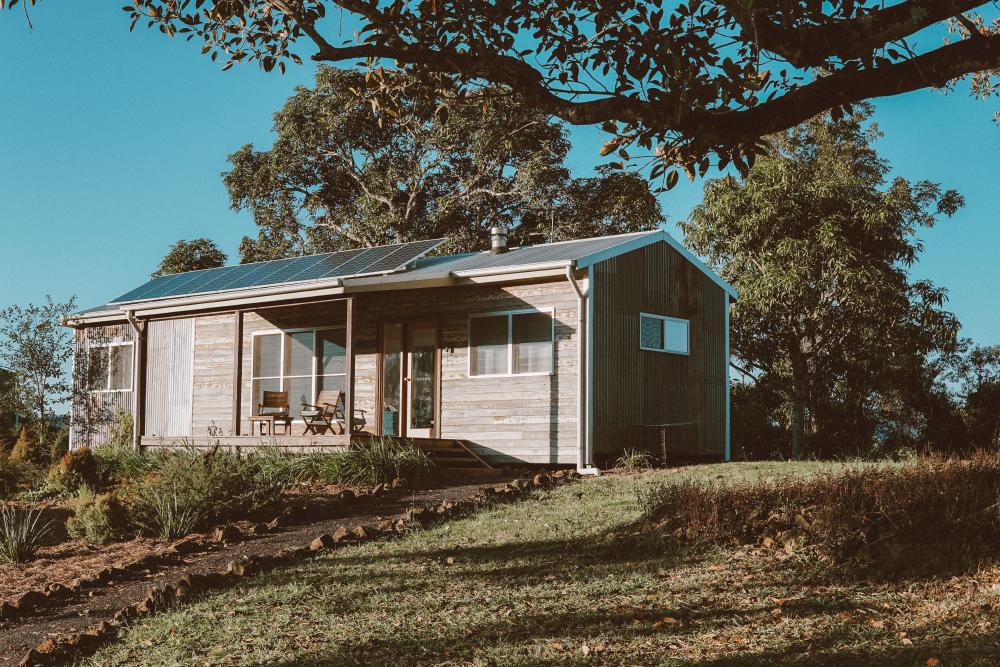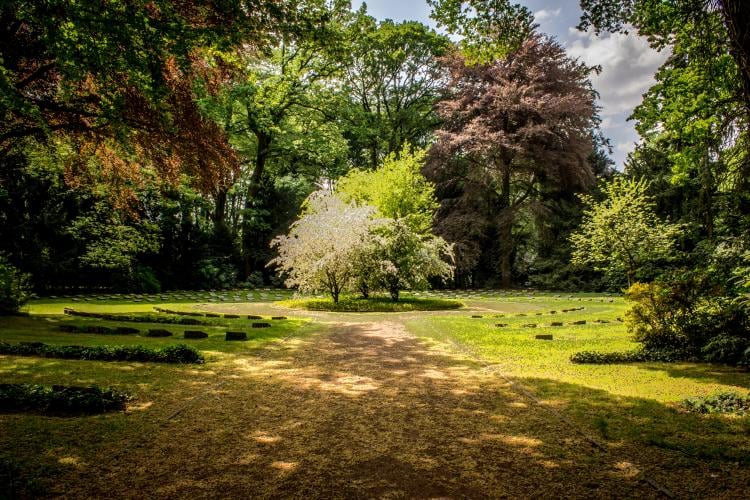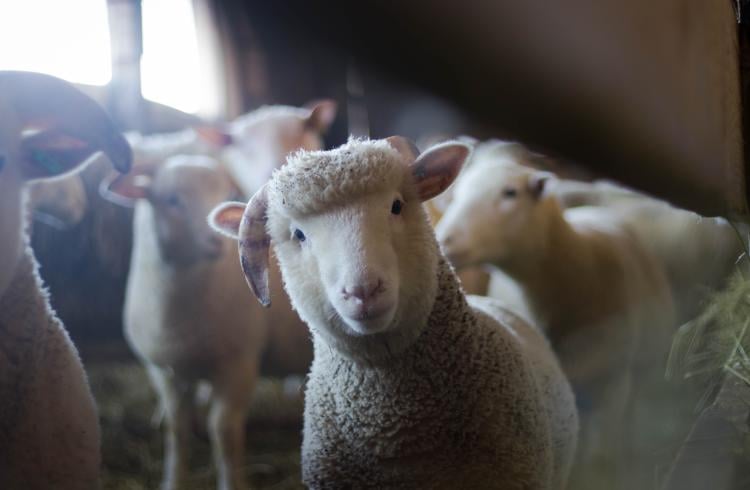
So you want to build a sustainable home, but you don't know what you have to do? Well, humans have always built things, it’s what we do. From basic home adobe structures to the Pyramids of Giza, the Colosseum, and the towering high-rises of modern cities, our choices over where we live and what makes the structures we create has always moved in accordance with our needs and desires. However, now in the 21st century, it is not only our desires or our culture that have got to dictate the designs of our abodes.
Our world and climate are changing, and we need to adapt our buildings to its needs in this new context. However, do not fear! Building an eco-friendly house is something that we have always been capable of, and the present day requires a return to sustainable solutions to meet our housing needs. This is something that we can do combining ancestral techniques and modern know-how, and so you have got what it takes to do it!
So what makes a sustainable home? And how on earth do you go about building one? It is not as complex or challenging as it seems, and if you are in the position to build a new house today, making it sustainable should, (and can without too much difficulty), be a priority. Once you have decided, when building an eco-friendly house, there are a few key areas to take into consideration.
Obviously, there are lots of ways to incorporate sustainability into your home, here you can check out some everyday tips to include in your routine: 7 Sustainable Cleaning Tips to Try On Your Home And Go Greener
However, in this article, we will walk through 4 of the most important considerations when it comes to actually building your home: structural considerations, orientation and location, the materials you should use, and the best ways to meet your energy needs.
What makes a home sustainable is a mixture of all of the above, and the desire to make it happen!
Having a sustainable home is a great way of helping the environment and being eco-friendly: How to Design a Sustainable Home? 50 Easy Sustainable Home Tips!

Let’s get started and talk about the structural considerations you need to bear in mind when thinking about building your new eco-friendly house. Sustainable architecture doesn’t need to be tricky, as long as you bear in mind these key ideas.
First-off let’s talk about size because in terms of sustainable architecture - it does actually matter! It might seem a pretty obvious point, but it is actually an important consideration. Very simply, the smaller a house the more eco-friendly it will be. This is because the smaller the house is, the less energy you need to keep it warm, and vice-versa the less to keep it cool.
A huge property is always going to be freezing in the winter and too hot in the summer, requiring exorbitant radiators and air-con units to keep temperatures balanced. In addition to temperature considerations, the bigger the property the more the materials required to build it and the overall consumption of products to maintain it, putting extra stress both on the environment and your wallet.
Continuing our structural theme; the layout of your house is also very important to consider. Did you know that igloos are one of the most energy-efficient structures out there? They have reduced surface area which means that they are great at combating heat loss. Now, I am not suggesting that you build yourself an igloo, however bear in mind layout! The bigger your surface area, the less energy efficient the space is likely to be.
Thus, think about building up rather than out. This is a great tip for building an eco-friendly house regardless of location, however it is especially applicable in urban spaces if you have a small plot of land, it can be turned to your advantage as this kind of layout is part of what makes a sustainable home.

Our final structural point is pretty fundamental as it’s the roof! Make sure you always build in relation to the location where you live! Flat roofs are fine for warmer climates, but they are not suitable for wet places. As it happens, my mum is about to replace a flat roof that we have in our home in the UK as the damp from high rainfall collects there and it is never able to fully dry out.
Unfortunately, the structure was already in place when we moved in and it cannot be changed and so will have to be tinkered with forevermore.
It just goes to prove that if you have the possibility of either building from scratch or making substantial structural changes to a pre-existing property in the long term, this will save both the environment and your wallet increased costs over time. One roof that lasts a long time is better and more sustainable than having to keep replacing it over the years.
Another thing to bear in mind when considering your roof is the possibility of including a roof garden, or green roof. Green roofs with plants can be good for insulation as they keep the heat out. They also provide a green space on your roof to enjoy which can also double-up as a magnet for wildlife such as birds and insects.

Where do you want to be? Where do you want to be building an eco-friendly house? This is going to be your first and most fundamental question when you decide to build. Orientation and location are key considerations for sustainable architecture. Light is governed by the orientation of a property.
Principally, it depends on where you are in the world. What makes a sustainable home in terms of light distribution will vary depending on whether or not you are in the Northern or Southern hemispheres. In both during winter, natural light can help heat your home and obviously provide light without you having to rely on electricity.
So, if you live in the Northern hemisphere make sure you design your house with lots of windows that face south in the rooms you live in the most. With the summer in mind, make sure that you don’t have too many windows that look directly to the west as this will give you lots of intense light in the summer as the sun moves across the sky in the afternoon, which may be a little too much to handle if it gets warm.
The natural light the windows give you will be great however and if western windows are something that you really want- you can always try some natural obstacles such as trees in the garden to reduce the intensity if necessary.
A tree that loses its leaves in the winter but that has good coverage in the summer to help with this. You can also install roof coverings and awnings. They will block the sun in the summer but not in the winter. The same goes for the southern hemisphere of course but rather that the windows should be located on the northern rather than the southern side of the property.
Another great consideration in what makes a sustainable home is a skylight to have natural light fall from the roof - ideal for illuminating features such as a central staircase. (While we are on the topic of the outdoors, your garden and its relation to your sustainable house if you want more information on how to be sustainable outside check out the following article: Eco Friendly Pest Control: 5 Top Products to Protect your Plants
If you are building a new house, one of the considerations you might take into account when choosing its location is whether the area will permit you to make use of what the local environment has to offer to meet your energy needs. Building in a sunny area with reliable sun exposure throughout the day, will make you want to consider incorporating solar panels into the structure of the roof.
Solar panels do imply a large initial expenditure however, the cost of the initial installation can be recuperated over the course of the following years as overall your electricity bill will decrease. Small wind turbines are also an option if you are going to build in an area that has good and consistent wind speeds - even if not all year round, what makes a sustainable home is making the most of what you have.
While intermittent, wind turbines could still be worth it to cover your energy needs at certain times.

While it may be beautiful and lavish, importing Grecian marble for your centerpiece staircase is not the most sustainable thing you could do, unless that is, you live on Paros. As it's more than likely the case that you don’t, what makes a sustainable home is sourcing your construction materials locally.
If natural rocks are your thing (and marble is very beautiful), try to find a way of sourcing it from a local quarry or find the equivalent rock native to the local area, such as granite which can also look great!
The same goes for all materials. Try to find wood from local forests, preferably sustainable ones! Or if not, recycling previously used wood can be a great alternative as long as the beams are structurally sound. Buying locally also has the added benefit of supporting local businesses that otherwise find it hard to compete against bigger brands. Another great construction material is steel, you can get hold of recycled steel as its composition and strength is unaltered by recycling.

Insulation is a key element of what makes a sustainable home and fortunately there are lots of sustainable options out there to choose from. When choosing what makes a sustainable home we can go back to the most ancestral building structures and choose insulation made from natural materials such as straw!
It turns out straw is more than just what horses eat, it can be easily and effectively incorporated into the walls of eco-friendly homes as a non-toxic and renewable form of insulation.
Furthermore: you know your super cosy snug winter jumper? Well you can also stick wool in your walls and ceilings to act as natural insulation, an age-old, generational material it still does the job, it is totally sustainable and can be sourced without causing any damage to sheep!
If you like a good glass of wine (as I do) don’t forget that cork is a material that can be used in soundproofing as well! A final point to think about is: to be careful with the materials you use for the windows and doors of the property.
Glass is vital so that we can have lots of natural light come into a property, but it is also a very easy way for energy to be lost. Use double glazing as a minimum (you can also get triple) on the windows for good insulation, once again for keeping the heat in and the cold out and vice-versa.
So there you have it, an analysis of some of the key factors in what makes a sustainable home. If you get your structure, orientation/location, and materials right in building an eco-friendly house the rest of the jigsaw in terms of finding sustainable interiors will fall into place easily.
Once these fundamental pillars are in place, you can be assured that you will have a home in accordance with sustainable architecture, which will be light on the environment and in the long term on your finances.
As the planet is put under increasing strain sometimes it is easy for us to feel powerless in the face of the challenge before us, however what makes a sustainable home truly fantastic is that its a way in which you can make a difference, if a house is truly sustainable it will pass the test of time which in our lifetime will be measured by how we coexist with our planet.
If you want to learn more about how to maintain your home in the most sustainable way possible check out some more of our articles: All You Need to Have the best Sustainable Bedroom Set and Solar Panels: Which is the Best Solar Panel Type and where to buy it?